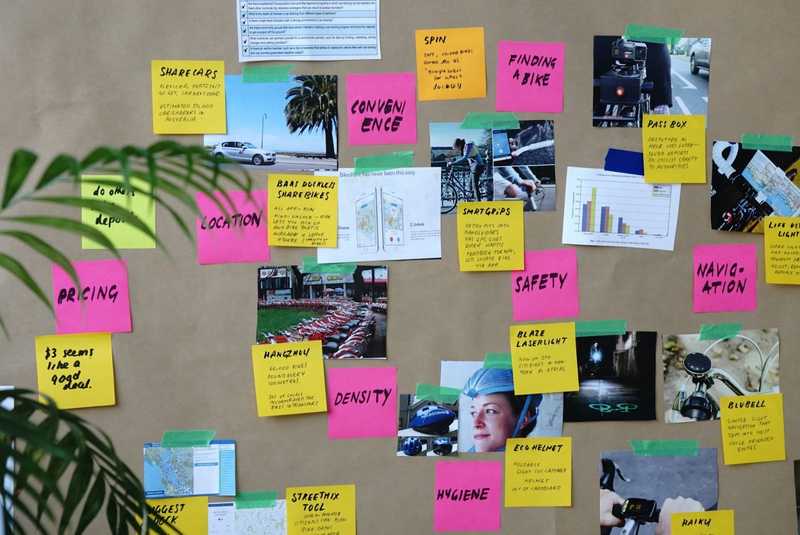Gathering crucial information is only the first step in the user research process. Once you've obtained the needed data, you're required to analyze and synthesize it to export valuable insights from your research findings. As many individuals consider this phase to be the most challenging and perplexing, they often face discouragement before embarking on it. That's why we dedicate this article to elaborate on how to synthesize qualitative data and its best practices.
Doing so will give you an insight into the easiest and most effective ways to synthesize research findings to accelerate the process. Furthermore, by elaborating on the specifics of each practice, you'll easily determine which is the best option for your unique circumstances. Continue reading to learn all there is to know about qualitative research synthesis and the most efficient techniques.
What is Qualitative Research Synthesis?
Qualitative research deals with non-numerical data gathered through various data-collection techniques. To extract the most meaningful information and solutions from it, synthesizing research findings is a vital step in the process. Thus, qualitative research synthesis is considered a systematic and interpretive process that involves filtering meaningful insights from diverse qualitative data sources.
Synthesizing qualitative data involves the careful examination of textual, visual, or auditory content, to identify patterns, themes, and relationships. Through this process, you can uncover hidden insights, explore connections between different elements, and derive meaningful interpretations that contribute to a deeper understanding of the user experience.
This practice is thought to be highly flexible and adaptable, allowing you to use various data synthesis methods. Therefore, you'll have the opportunity to refine your qualitative data analysis as new information emerges.
Given that qualitative research synthesis demands a comprehensive and diverse perspective, it frequently involves collaboration among research team members. The results are usually presented in a narrative format, incorporating real-world context and highlighting the complexity and depth inherent in qualitative research.
Photo by Jo Szczepanska on Unsplash
Best Practices in Qualitative Synthesis
As mentioned, there are various qualitative synthesis frameworks you can employ during this step of the user research process. However, when choosing the one that works best for you, remember that it should closely align with your research goals and objectives. That being said, here are some of the most commonly used data synthesis methods for qualitative research:
- Affinity mapping
- Tagging data
- Meta-ethnography
- Thematic analysis
- Narrative synthesis
- Grounded theory
Affinity mapping
The first option you can try out is affinity mapping. It involves organizing data into groups based on their natural relationships. It's praised for its efficiency in identifying patterns from survey responses and other qualitative data since it allows you to group the findings by intuition or logic.
Being one of the most straightforward methods for synthesizing information, you only need to follow these simple steps:
- Document each valuable finding on a separate card
- Analyze which findings seem to relate to each other
- Sort the cards into logical groups to form information clusters
To visually depict patterns and themes in this manner, consider using sticky notes or digital tools to facilitate a collaborative approach. This way, you'll enable clarity in data interpretation and flexible refinement of clusters as the analysis progresses. Since it's particularly effective in managing large datasets, it's used for transforming raw information into a structured format that fosters a shared understanding and deeper insights.
Photo by Alvaro Reyes on Unsplash
Tagging data
Tagging data involves the assignment of keywords or tags to qualitative data as an attempt to assign meaning to them. This later allows you to create an organized system for your research findings to quickly identify patterns and trends. Moreover, you can refine the tags as necessary throughout the process to enhance the efficiency of qualitative data analysis.
If you're looking for an easy-to-use tool that can aid the tagging process, check out our User Evaluation platform. Its ability to generate AI tags will not only keep your data organized but will also accelerate the process and save you time. Alongside the option of adding content sources, you'll never miss an important finding ever again.
Meta-ethnography
Even though many people get confused by its name, the meta-ethnography synthesis method can be applied to various qualitative data. It involves the translation of concepts and themes from individual studies into a new, comprehensive understanding. This approach allows for the development of higher-order interpretations and insights by comparing and synthesizing qualitative data from various sources.
To perform this synthesis successfully, follow these simple steps:
- Gathering the qualitative data
- Deciding which data is most relevant
- Analyzing the research findings
- Determining relationships between the findings
- Translating the findings into one another
- Creating a comprehensive interpretation
This method is considered an in-depth exploration of a particular phenomenon by integrating diverse perspectives from different studies. It contributes to the advancement of knowledge in a specific field by offering a more comprehensive and synthesized understanding of the studied topic. Additionally, it is particularly valuable when dealing with complex or controversial subjects, as it allows you to reconcile conflicting findings and generate new theoretical insights.
Thematic analysis
Thematic analysis involves identifying, analyzing, and reporting patterns or themes within a single dataset. It allows you to systematically organize and interpret qualitative data, providing a rich and nuanced understanding of the user experience.
To successfully conduct such qualitative research synthesis, you should follow these steps:
- Familiarizing yourself with the data
- Generate initial codes
- Searching for themes
- Review and refine the themes
- Define and name the themes
- Produce a comprehensive report
This data synthesis method is particularly valuable for uncovering patterns and exploring the depth of the participant's experiences. It can be applied to diverse data sources, such as interviews, focus groups, or textual materials. Moreover, it provides a structured yet adaptable framework for extracting meaningful insights from qualitative data, enhancing the understanding of complex phenomena.
Narrative synthesis
Lastly, the narrative synthesis method is known for the systematic and narrative-based synthesis of findings from multiple studies. This approach aims to tell a coherent and compelling story by combining and analyzing the narratives or textual descriptions of study results. Unlike other synthesis methods, narrative synthesis often involves the use of textual descriptions rather than statistical techniques.
Here are the steps you should follow to successfully execute such synthesis:
- Defining the research question
- Searching the relevant studies
- Selecting studies based on inclusion criteria
- Extracting and summarizing key findings
- Synthesizing the results into a coherent narrative
Narrative synthesis is advantageous for its ability to address a wide range of research questions and accommodate diverse study designs. It is particularly useful when the quantitative data is limited or when the focus is on understanding the context, process, or experiences of the participants. This method allows researchers to draw connections between studies, explore patterns across diverse contexts, and generate a more holistic understanding of a given topic.
Conclusion
After discovering how to synthesize qualitative data, remember to always take the time to evaluate your research needs and objectives before choosing the most suitable method. This will allow you to analyze and synthesize the most important data which can then be used to address common pain points and work on additional product improvements. If you're ever having trouble organizing your findings, remember that our User Evaluation platform offers various features to ease and accelerate this process which can be used to reach your desired outcome.


